![]()

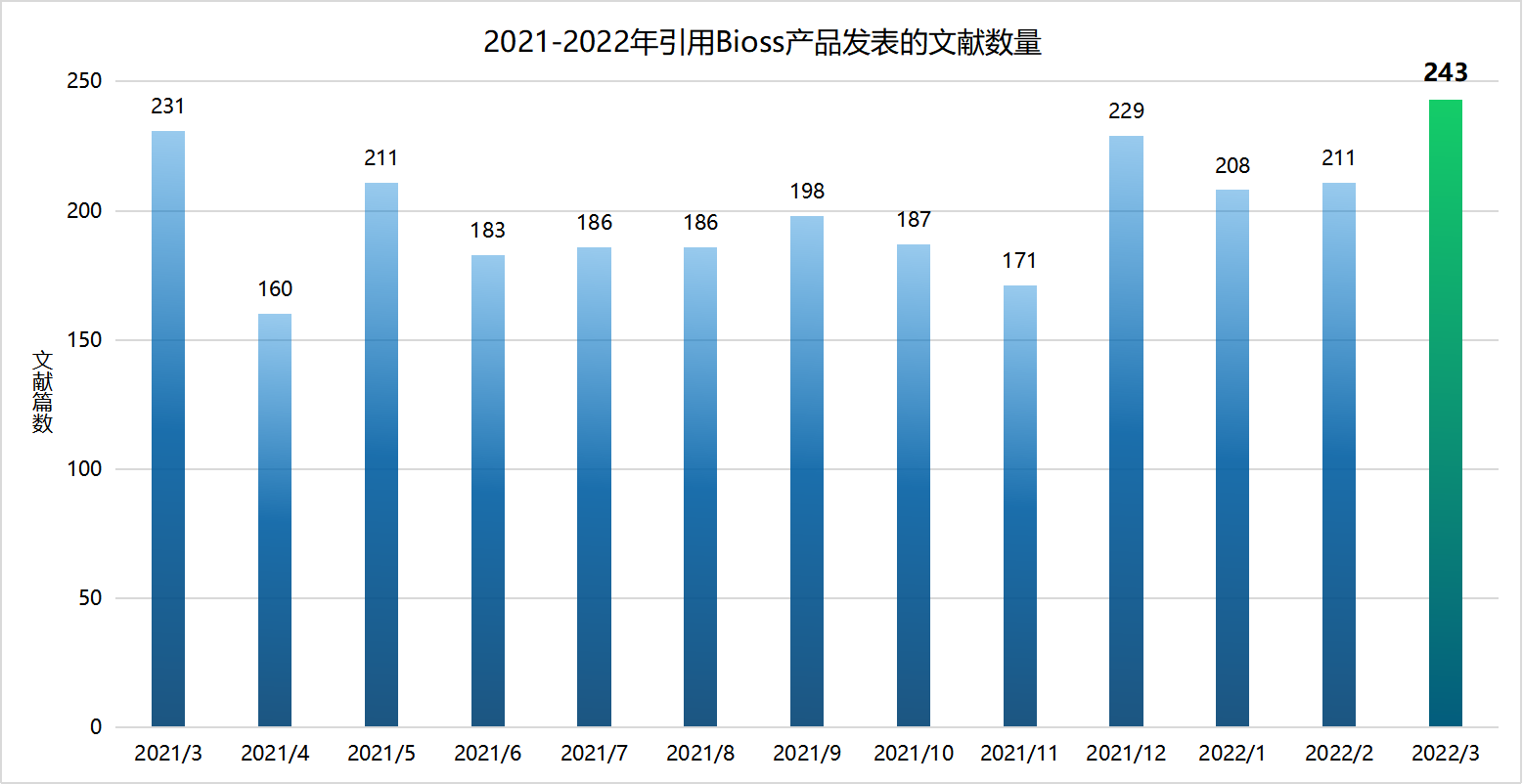
图一
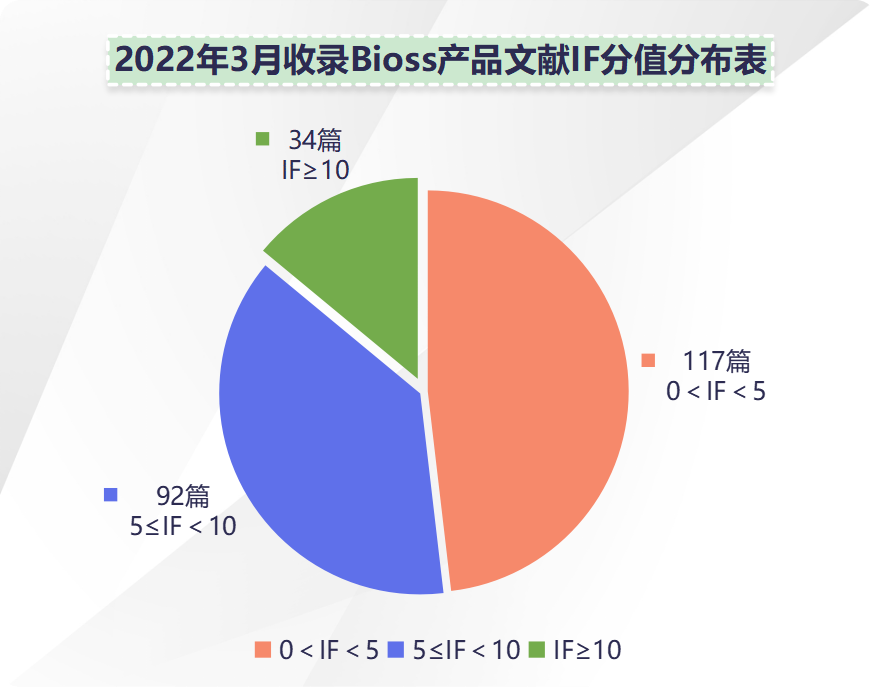
图二
本文分享来自 Nature Nanotechnology / Immunity / Cancer Cell 等期刊的8篇 IF>20的文献摘要,让我们一起欣赏这些文章吧。
文献 1
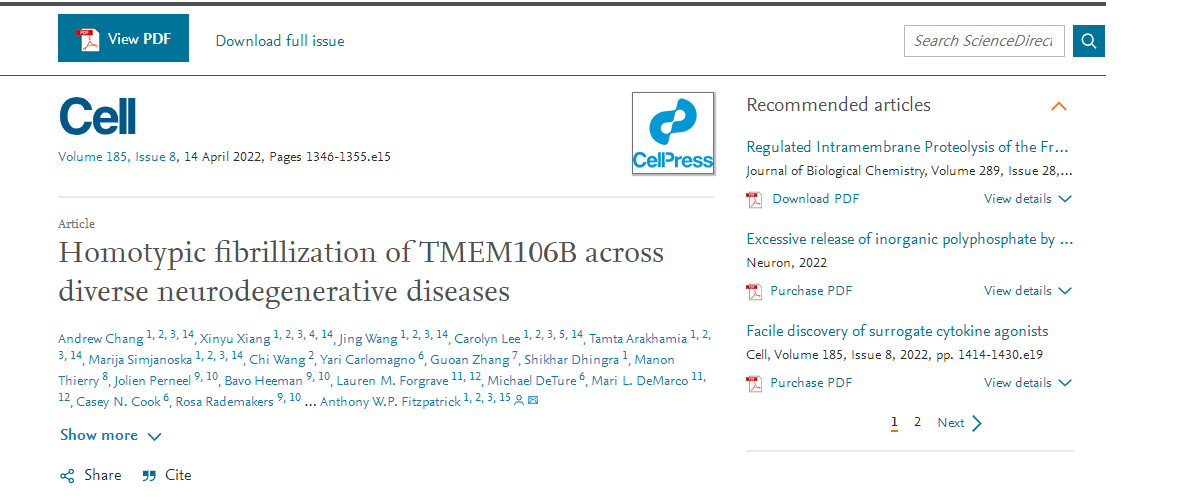
[IF=41.582] Cell
DOI : 10.1016/j.cell.2022.02.026
文献引用抗体:bs-11694R | Anti-TMEM106B pAb | Other
Institution : 哥伦比亚大学生物化学和分子生物物理系,莫蒂默·祖克曼心理大脑行为研究所
摘要: Misfolding and aggregation of disease-specific proteins, resulting in the formation of filamentous cellular inclusions, is a hallmark of neurodegenerative disease with characteristic filament structures, or conformers, defining each proteinopathy. Here we show that a previously unsolved amyloid fibril composed of a 135 amino acid C-terminal fragment of TMEM106B is a common finding in distinct human neurodegenerative diseases, including cases characterized by abnormal aggregation of TDP-43, tau, or α-synuclein protein. A combination of cryoelectron microscopy and mass spectrometry was used to solve the structures of TMEM106B fibrils at a resolution of 2.7 Å from postmortem human brain tissue afflicted with frontotemporal lobar degeneration with TDP-43 pathology (FTLD-TDP, n = 8), progressive supranuclear palsy (PSP, n = 2), or dementia with Lewy bodies (DLB, n = 1). The commonality of abundant amyloid fibrils composed of TMEM106B, a lysosomal/endosomal protein, to a broad range of debilitating human disorders indicates a shared fibrillization pathway that may initiate or accelerate neurodegeneration.
文献 2
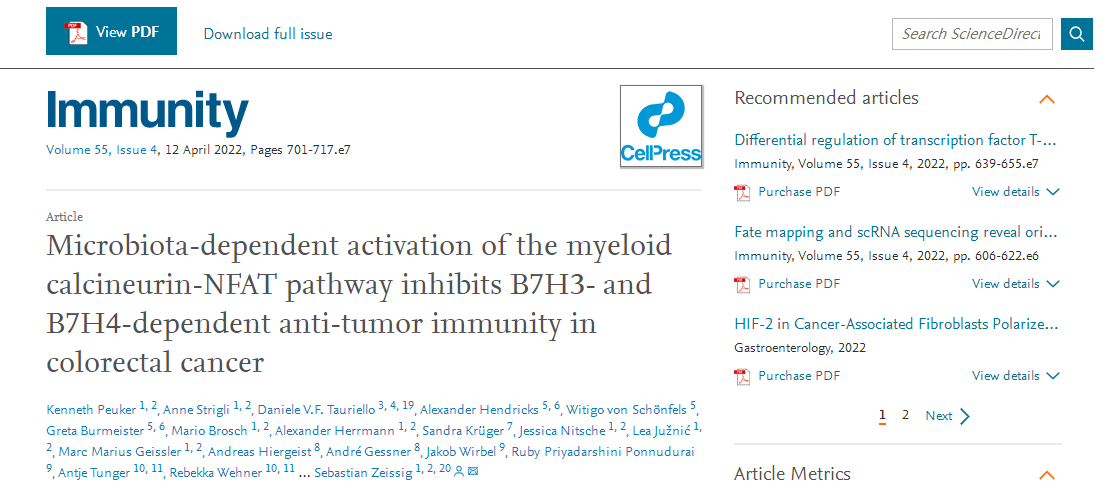
[IF=31.745] Immunity
DOI : 10.1016/j.immuni.2022.03.008
文献引用抗体:bs-0673R | Anti-human B7H4 pAb | Other
Institution : 德国德累斯顿大学医学中心第一医学系
摘要:Bacterial sensing by intestinal tumor cells contributes to tumor growth through cell-intrinsic activation of the calcineurin-NFAT axis, but the role of this pathway in other intestinal cells remains unclear. Here, we found that myeloid-specific deletion of calcineurin in mice activated protective CD8+T cell responses and inhibited colorectal cancer (CRC) growth. Microbial sensing by myeloid cells promoted calcineurin- and NFAT-dependent interleukin 6 (IL-6) release, expression of the co-inhibitory molecules B7H3 and B7H4 by tumor cells, and inhibition of CD8+T cell-dependent anti-tumor immunity. Accordingly, targeting members of this pathway activated protective CD8+T cell responses and inhibited primary and metastatic CRC growth. B7H3 and B7H4 were expressed by the majority of human primary CRCs and metastases, which was associated with low numbers of tumor-infiltrating CD8+T cells and poor survival. Therefore, a microbiota-, calcineurin-, and B7H3/B7H4-dependent pathway controls anti-tumor immunity, revealing additional targets for immune checkpoint inhibition in microsatellite-stable CRC.
文献 3
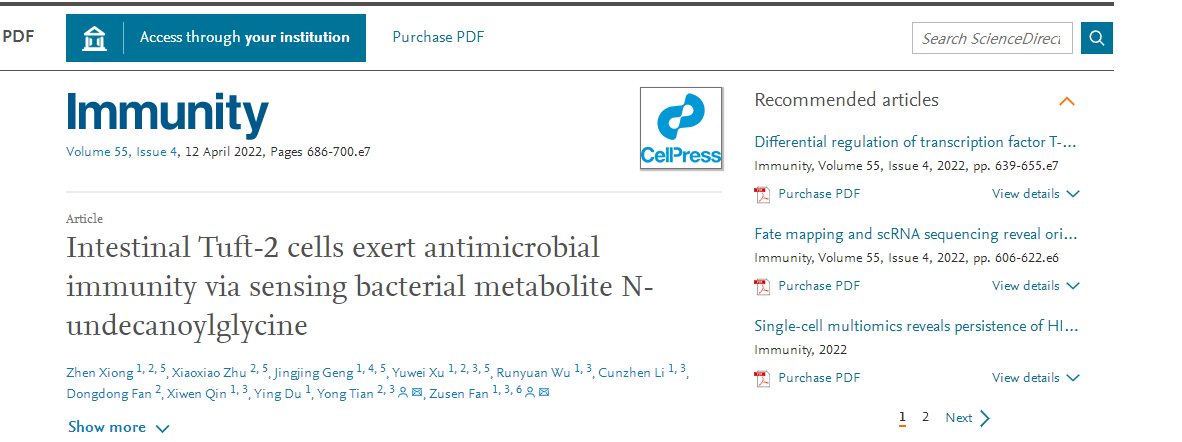
[IF=31.745] Immunity
DOI : 10.1016/j.immuni.2022.03.001
文献引用抗体:bs-21046R | Anti-Pou2f3 pAb | WB
Institution : 中国科学院生物物理研究所感染与免疫重点实验室
摘要:Tuft cells are a type of intestinal epithelial cells that exist in epithelial barriers and play a critical role in immunity against parasite infection. It remains insufficiently clear whether Tuft cells participate in bacterial eradication. Here, we identified Sh2d6 as a signature marker for CD45+ Tuft-2 cells. Depletion of Tuft-2 cells resulted in susceptibility to bacterial infection. Tuft-2 cells quickly expanded in response to bacterial infection and sensed the bacterial metabolite N-undecanoylglycine through vomeronasal receptor Vmn2r26. Mechanistically, Vmn2r26 engaged with N-undecanoylglycine activated G-protein-coupled receptor-phospholipase C gamma2 (GPCR-PLCγ2)-Ca2+ signaling axis, which initiated prostaglandin D2 (PGD2) production. PGD2 enhanced the mucus secretion of goblet cells and induced antibacterial immunity. Moreover, Vmn2r26 signaling also promoted SpiB transcription factor expression, which is responsible for Tuft-2 cell development and expansion in response to bacterial challenge. Our findings reveal an additional function of Tuft-2 cells in immunity against bacterial infection through Vmn2r26-mediated recognition of bacterial metabolites.
文献 4

[IF=30.849] Advanced Materials
DOI : 10.1002/adma.202109984
文献引用抗体:
bs-1014R | Anti-CD11b pAb | IF
bs-0295G-AF555 | Goat anti-Rabbit IgG H&L/AF555 | IF
Institution : 中国科学院纳米材料与纳米安全生物医学效应重点实验室
摘要:Therapeutic mRNA vaccination is an attractive approach to trigger antitumor immunity. However, the mRNA delivery technology for customized tumor vaccine is still limited. In this work, bacteria-derived outer membrane vesicles (OMVs) are employed as an mRNA delivery platform by genetically engineering with surface decoration of RNA binding protein, L7Ae, and lysosomal escape protein, listeriolysin O (OMV-LL). OMV-LL can rapidly adsorb box C/D sequence-labelled mRNA antigens through L7Ae binding (OMV-LL-mRNA) and deliver them into dendritic cells (DCs), following by the cross-presentation via listeriolysin O-mediated endosomal escape. OMV-LL-mRNA significantly inhibits melanoma progression and elicits 37.5% complete regression in a colon cancer model. OMV-LL-mRNA induces a long-term immune memory and protects the mice from tumor challenge after 60 days. In summary, this platform provides a delivery technology distinct from lipid nanoparticles (LNPs) for personalized mRNA tumor vaccination, and with a “Plug-and-Display” strategy that enables its versatile application in mRNA vaccines.
文献 5
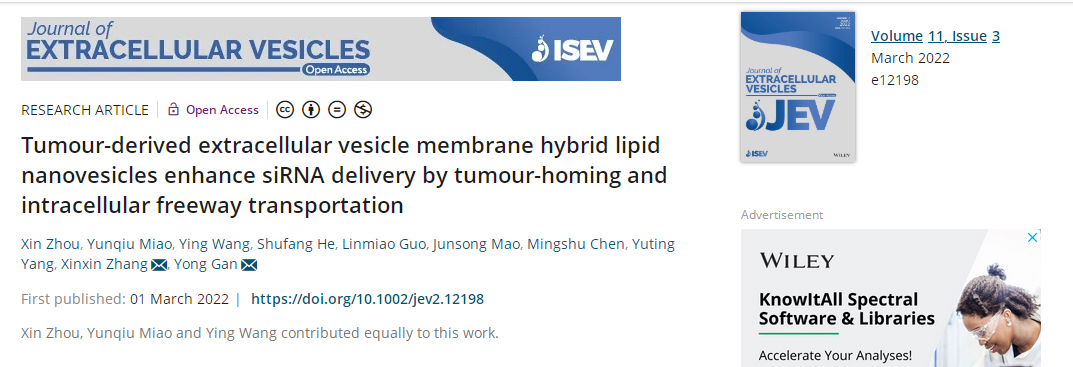
[IF=25.841] Journal of Extracellular Vesicles
DOI : 10.1002/jev2.12198
文献引用抗体:bs-0521R | Anti-CD44 pAb | WB
Institution : 中国科学院药物研究国家重点实验室,上海药物研究所
摘要:Extracellular vesicles (EVs) have been proved a promising small interfering RNA (siRNA) delivery vehicle to mediate gene-silencing. Tumour-derived extracellular vesicles (TDEVs) as genetic exchange vectors in the tumour microenvironment, enable intercellular communication for a wide range of endogenous cargo molecules, such as RNAs and proteins. However, the oncogenic cargo of TDEVs limits their application in siRNA delivery for cancer therapy. Herein, we isolated TDEVs from hepatocellular carcinoma (HCC) cells and derived TDEV membranes by abandoning their content. Innovative TDEV membrane hybrid lipid nanovesicles (LEVs) were then fabricated by fusion of TDEV membranes and phospholipids to realize precise delivery to tumours and highly efficient transfection of siRNA. The TDEV membranes endow LEVs with ‘homing’ targeting ability, facilitating specific internalisation into parent HCC cells primarily through heparan sulfate proteoglycan-mediated pathways. Unlike conventional lipid-based nanovesicles, LEVs can bypass the endosomal degradation pathway, boost the delivery of siRNA through the Golgi and endoplasmic reticulum (ER) intracellular ‘freeway’ transportation, achieving a 1.7-fold improvement in siRNA transfection efficiency compared with liposomes. Additionally, siRNA loaded LEVs were demonstrated to enhance the antitumour efficacy in HCC bearing mice through effective gene silencing in the tumour sites. Our results highlight the potential application of the TDEV membrane-derived nanovesicles as an advanced siRNA delivery strategy for cancer therapy.
文献 6
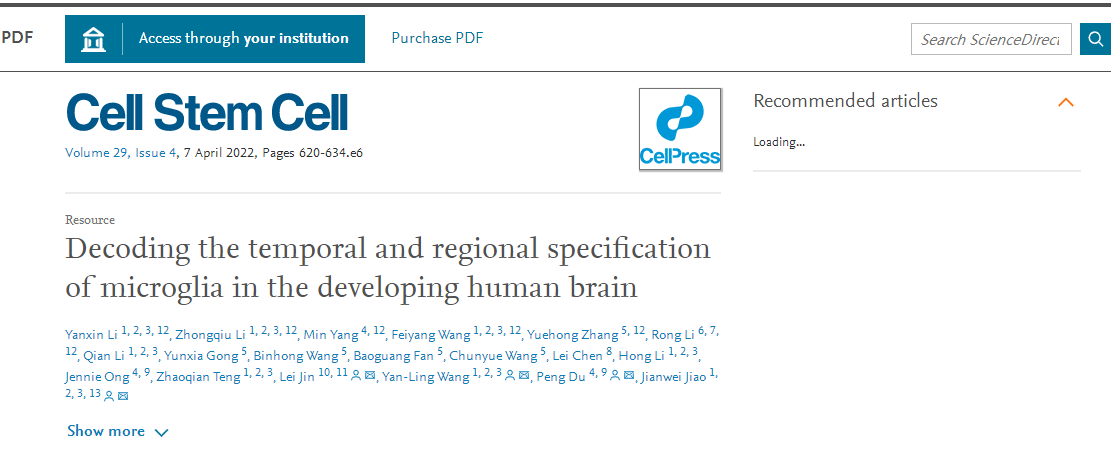
[IF=24.633] Cell Stem Cell
DOI : 10.1016/j.stem.2022.02.0045
文献引用抗体:
bs-7106R | Anti-NUPR1 pAb | IHC
bs-12151R | Anti-NAV3 pAb | IHC
bs-1011R | Anti-CXCR4 pAb | IHC
Institution :中国科学院动物学研究所干细胞与生殖生物学国家重点实验室
摘要:Region-related heterogeneity and state transitions of microglia are important for brain development and neurological pathogenesis. However, regional specialization and state transition in microglia during early human CNS development remain unclear. Here, we profile single-cell transcriptomes of microglia from distinct regions of the developing human brain, and combined with experimental verification, we define and characterize early microglial fate determinations related to regional specification and state transition. We identified several subclasses of neuronal gene-enriched microglia with regional specification that dynamically and transiently appeared as early brain regions formed. In contrast, immune-related microglia were regionally specialized at later stages of CNS development. Surprisingly, we discovered that region-specialized immune-related microglia exit from a relative resting state and transition into distinct active states. In addition, we experimentally verified the microglial state transition. Finally, we showed that the state transition is conserved but that there are molecular differences in developing microglia in humans and mice.
文献 7

[IF=21.023] Cell Host & Microbe
DOI : 10.1016/j.chom.2022.03.035
文献引用抗体:bs-0297G-HRP | Goat Anti-Human IgG H&L/HRP | ELISA
Institution : 浙江大学医学与生命科学研究所第二附属医院消化内科
摘要:The SARS-CoV-2 Omicron variant harbors more than 30 mutations in the spike protein, leading to immune evasion from many therapeutic neutralizing antibodies. We reveal that a receptor-binding domain (RBD)-targeting monoclonal antibody, 35B5, exhibits potent neutralizing efficacy to Omicron. Cryo-electron microscopy structures of the extracellular domain trimer of Omicron spike with 35B5 Fab reveal that Omicron spike exhibits tight trimeric packing and high thermostability, as well as significant antigenic shifts and structural changes, within the RBD, N-terminal domain (NTD), and subdomains 1 and 2. However, these changes do not affect targeting of the invariant 35B5 epitope. 35B5 potently neutralizes SARS-CoV-2 Omicron and other variants by causing significant conformational changes within a conserved N-glycan switch that controls the transition of RBD from the “down” state to the “up” state, which allows recognition of the host entry receptor ACE2. This mode of action and potent neutralizing capacity of 35B5 indicate its potential therapeutic application for SARS-CoV-2.
文献 8
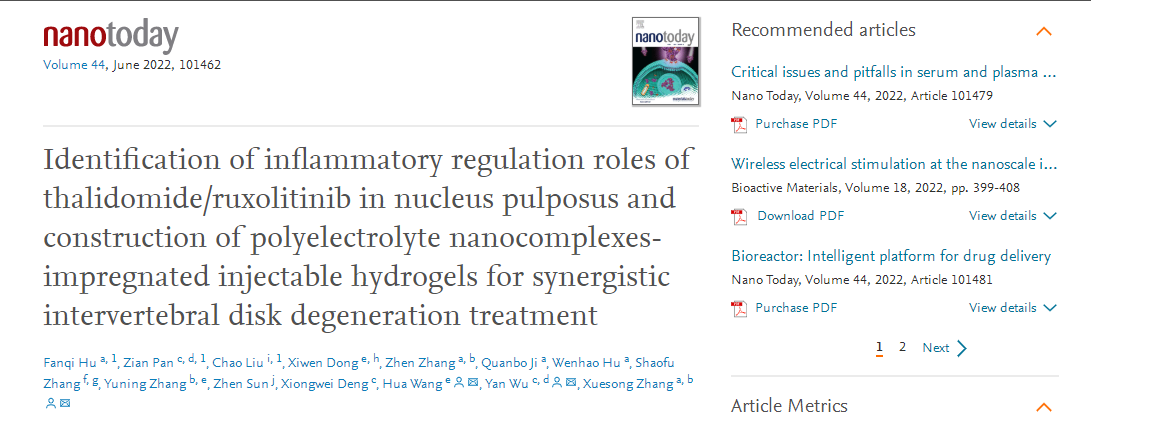
[IF=20.722] Nano Today
DOI : 10.1016/j.nantod.2022.101462
bs-3573R | Anti-ADAMTS-5 pAb | WB
bs-4191R | Anti-ADAMTS-4 pAb | WB
bs-0413R | Anti-MMP3 pAb | WB
Institution : 中国人民解放军总医院第四医疗中心骨科
摘要: Degeneration of the intervertebral discs (IVD) is an important underlying etiology of degenerative diseases contributor to lower back and neck pain. Alleviation of inflammation is recognized as the most direct way for the treatment of IVD. Repurposing of approved drugs is a viable alternative strategy to de novo drug discovery and development. The aim of this study is to identify the inflammatory regulation roles of the small molecule thalidomide (an immunomodulatory and TNF-α inhibitor) and ruxolitinib (a selective JAK1/2 inhibitor) in nucleus pulposus (NP) cells and investigate the combinational therapeutic potentials of thalidomide and ruxolitinib for ameliorating IVD degeneration. RNA-sequencing (RNA-seq) was used to detect differentially expressed genes (DEGs) after treatment of human NP cells with individual thalidomide and ruxolitinib, and relevant signaling pathways and functions of DEGs were detected by enrichment analysis. Western blot and immunofluorescence were applied to explore the mechanisms by which thalidomide and ruxolitinib regulated inflammatory factors in human NP cells. Moreover, we developed ruxolitinib and thalidomide co-delivered polyelectrolyte nanocomplexes (RTNPs) by the assembly of chitosan derivatives of positively charged chitosan hydrochloride (CS) and negatively charged carboxymethyl chitosan (CMCS). In vitro studies revealed that RTNPs could efficiently deliver drugs into NP cells and corresponding extracellular matrix (ECM)-related genes and proteins were adjusted. Furthermore, The RTNPs were assembled with Pluronic F127 to form a RTNPs/F127 injectable thermoresponsive hydrogels to maintain resident time within the nucleus pulposus, achieve sustained drugs release and achieve long-term therapy effects. The caudal disc degeneration model of SD rats was established by acupuncture, and X-ray, magnetic resonance scanning, μCT scanning, and histological methods were performed to detect the therapeutic effects of RTNPs/F127 hydrogel on IVD in vivo. As was demonstrated in the in vivo studies, in situ intradiscal injection of RTNPs/F127 composite displayed a relatively slower disc degenerating progression in a puncture-induced IVD rat model compared with the monotherapy pattern.